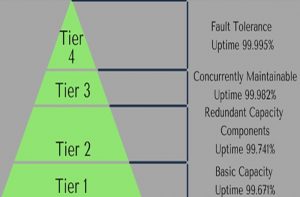The Big Data Rush
Data centers rely on various elements of IT infrastructure, including servers, storage systems, network components like switches and routers, as well as software applications. Additionally, data centers necessitate dependable uninterruptible power supplies and effective cooling systems.
Different types of data centers
Various types of data centers exist, including enterprise data centers, on-premises colocation facilities, managed service centers, and cloud data centers used for cloud computing. Colocation data centers, sometimes referred to as ‘carrier hotels,’ offer the option to lease server space. Instead of procuring a virtual machine from a public cloud provider, some data centers allow you to rent dedicated hardware resources. Managed service data centers, on the other hand, are operated by third-party providers on behalf of businesses.
In addition to the four mentioned types, there are two more: edge data centers and micro data centers. An edge data center is a compact facility strategically located as close as possible to end-users. The objective is to minimize latency and lag by dispersing smaller data centers instead of relying on a single large one. These edge computing facilities become particularly crucial when there is a high demand for low-latency data processing, especially in the context of IoT devices.
A micro data center represents the ultimate iteration of an edge data center, often scaled down to the size of a small office space and dedicated to processing data within a specific localized area. While large enterprise data centers remain prevalent, industry experts anticipate that the growth and development of colocation and micro data centers will persist.
Data centers are categorized into different types based on redundancy levels in various aspects like equipment, storage, servers, uplink, power, etc. Nowadays, there is a growing emphasis on energy efficiency in data centers, and this has become a significant trend in the construction of new data centers, as noted by Devroop Dhar, co-founder of Primus Partners.
Data Center Tier Rating Breakdown: Tier 1, 2, 3, 4
- Tier 1: A Tier 1 data center is characterized by a single power and cooling source and typically lacks redundant or backup components. It is estimated to have a predicted uptime of 99.671%, equivalent to approximately 28.8 hours of annual downtime.
- Tier 2: A Tier 2 data center features a single power and cooling channel, along with a degree of redundancy and backup components. It is expected to achieve a predicted uptime of 99.741%, equivalent to approximately 22 hours of annual downtime.
- Tier 3: A Tier 3 data center is equipped with multiple power and cooling sources and has established procedures for updates and repairs that can be carried out without the need for a complete shutdown. It is projected to attain an anticipated uptime of 99.982%, translating to approximately 1.6 hours of annual downtime.
- Tier 4: A Tier 4 data center is engineered to be entirely fault-tolerant, featuring redundancy for every component. It is expected to achieve an anticipated uptime of 99.995%, equivalent to approximately 26.3 minutes of annual downtime.

Why Do You Need Data Centers?
The demand for information, high processing capability, and additional storage is increasing. Although shifting to the cloud is a wonderful approach to accomplish this, it does not mean that data centers are no longer required. You need a mechanism to process and store the data, which can occur even on the cloud, which is why we now have cloud data centers.
Data centers, whether cloud or on-premises are required for every business these days, including education institutions, healthcare systems, telecom firms, government organizations, financial institutes, retailers, and so on, to reap the following benefits:
- Efficient Data Management and Storage
- Data Security
- Cost Efficiency
Future trends in data centers
- Data centers will focus on greening in the future as a prominent strategy. To achieve greening in data centers, strategies can include, Energy Efficiency, Renewable Energy, Waste Reduction, Sustainable Design, Cooling Solutions, Monitoring and Optimization, and Carbon Offsetting.
- As companies look at flexibility, the cloud will become mainstream due to several factors such as Scalability, Remote Work, Business Continuity, Global Reach, and Collaboration.
- Data center operations will focus on greater automation, organizations often deploy tools and technologies such as configuration management systems, orchestration platforms, containerization and container orchestration (e.g., Kubernetes), and software-defined infrastructure.
- Security and cyber resilience will be a critical component for the industry. There are many challenges faced by the industries like Data Protection, Service Availability, Regulatory Compliance, Advanced Threats, Cloud and Hybrid Environments. Due to these security concerns data centers invest in robust security measures, including firewalls, intrusion detection and prevention systems, encryption, access controls, security monitoring, and regular security assessments and audits. They also prioritize cyber resilience by developing comprehensive disaster recovery and business continuity plans.
- The proliferation of artificial intelligence, particularly the advancement of generative AI, is poised to play a substantial role in driving growth within the data center industry. This is due to the substantial demand for extensive digital processing and storage capacity necessitated by AI applications.
Conclusion
While the domain of cloud computing continues to expand, there is a simultaneous resurgence of interest in data centers, particularly in the form of smaller ‘Edge’ or ‘micro’ data center networks. This resurgence is attributed to increasingly stringent regulations and elevated customer expectations.
Source:
- https://www.nlyte.com/faqs/what-is-a-data-center/
- https://geekflare.com/data-center-types/
- https://phoenixnap.com/blog/data-center-tiers-classification

